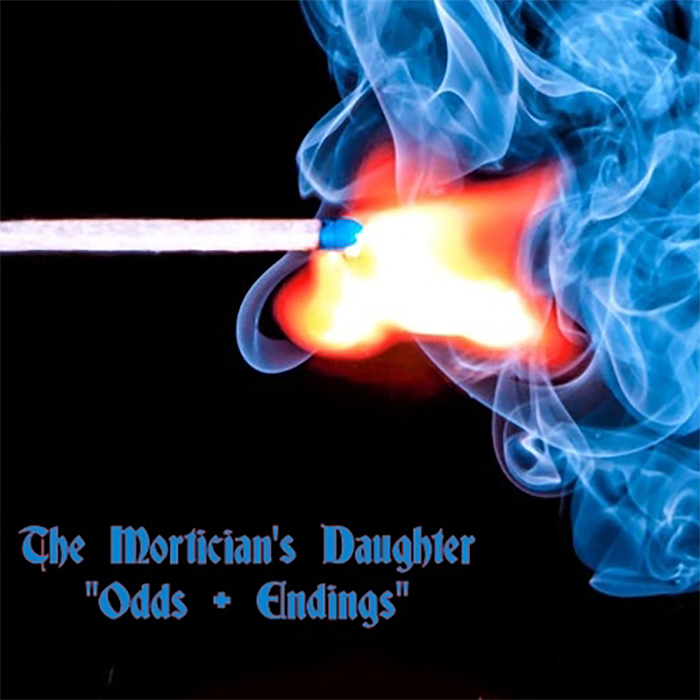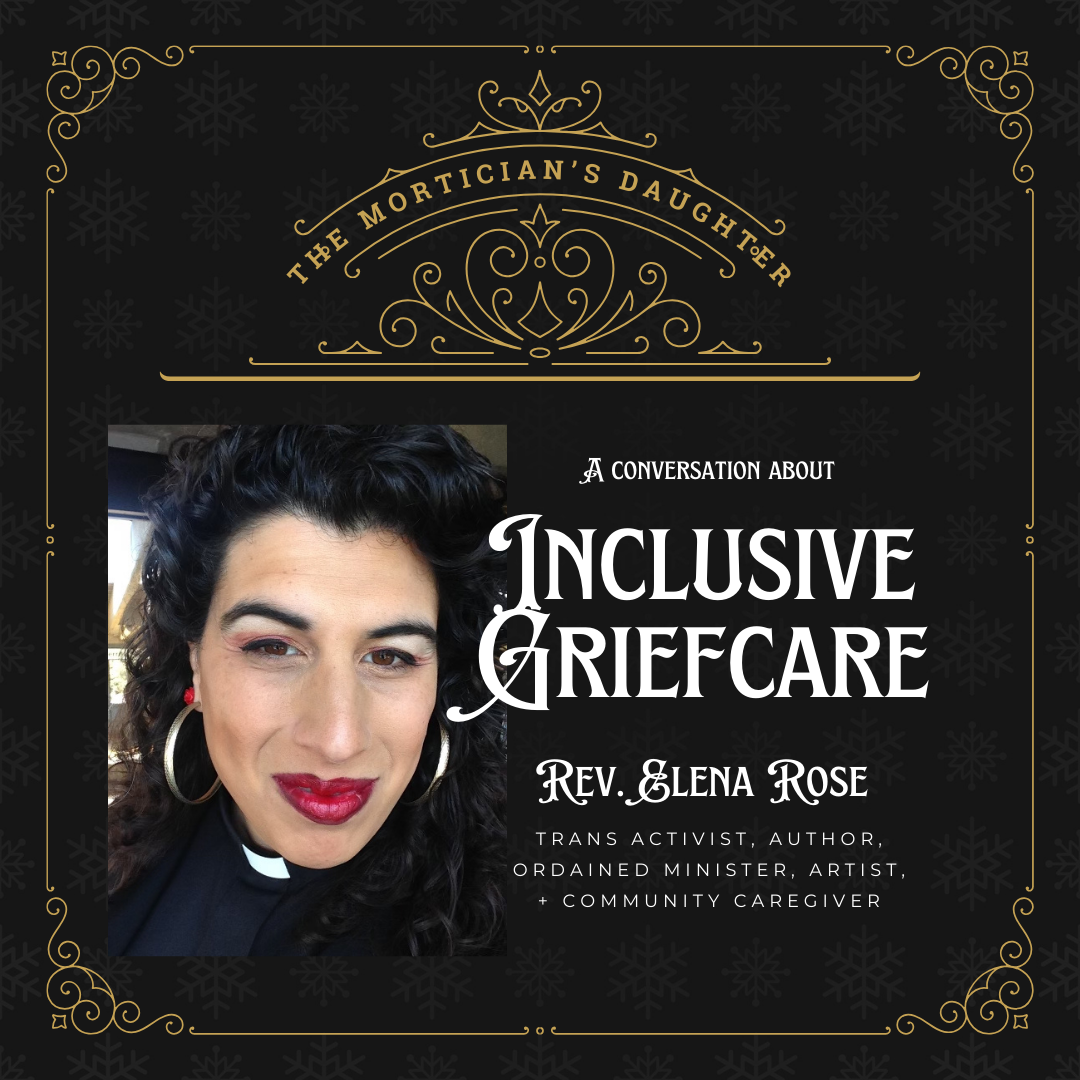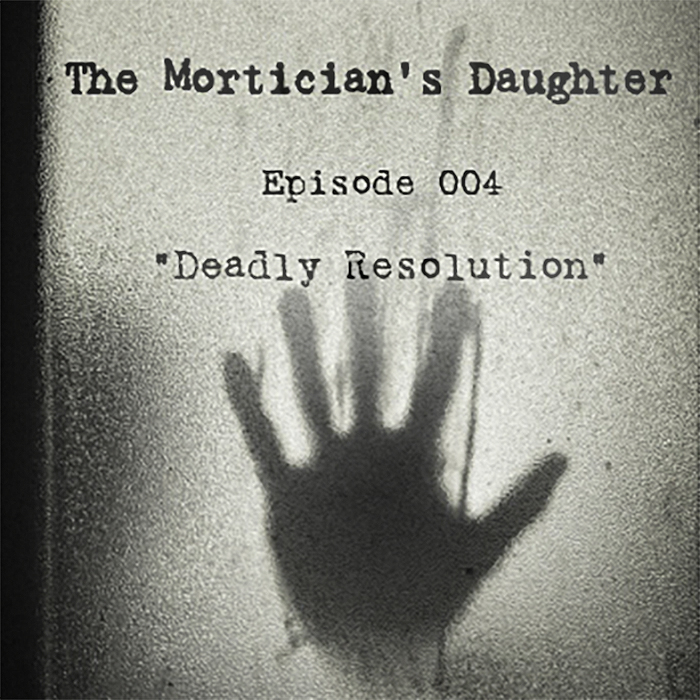Episode Transcript
Hello again my grim companions. It’s been a month since our last meeting and I’ve missed you all so dearly. Let’s not waste any time with the unneeded niceties before we get to the deadly details I’ve been gathering.
The subjects I plan to speak about today have been called by many names. The Good Neighbors. The Hobmen. The little people or people of peace. The honest folk or the kindly ones. Browny or Pigwiggen or Puckle. The Will O’ the Wisp.
In Ireland, they were the Dwindled Gods. In Scotland, they were split into the Blessed Ones of the Seelie Court and the Sluagh or the evil dead. And in Wales, they were called the Fair Family or the Tylwyth Teg.
Yes, I’m talking about Fairies. The Fae. The mischievous creatures of the British Isles that were carried to every known land, and perhaps even other dimensions, in story if not body.
In fact, fairies are considered part of “native British spirituality” according to American theosophist E. Evans Wentz and Scottish folklorist Lewis Spence. (1)
The sometimes-helpful, sometimes-hindering creatures most commonly referred to as fairies require offerings of water or milk and sometimes bread. Leaving such appeasements in your kitchen can earn fairy favor, but failing to do so could bring on sudden dischord. And, if you forget to leave water, those pesky fairies might decide to quench their thirst on blood sucked right from your big toe. Commit a more serious offense and you might see all your livestock wiped out in one foul swoop or much, much worse.
Early death records in the land of fairy rings account for the loss of more than one villager due to the murderous fae. I’m just saying, it wasn’t all blood-sucking from toes and milk-stealing.
So maybe it’s not surprising that it was common for offerings to be freely made to the fairy folk of these regions. Ale and, yes, more milk were poured out on trees and rocks and springs thought to be sacred to Queen Mab and her crew of tiny magical creatures. Still, an offering left in one’s kitchen overnight was considered a wise move so as not to incur the wrath of a browny or hobman. (4)
And, bonus, if you earn their goodwill, they might utilize their wide range range of supernatural powers to help you out. Tales attribute a range of enviable abilities to fairies from healing powers to divination, power over animals and the ability to grant material prosperity. (4)
But as notoriously touchy creatures, (4) fairies easily shift from benign to malicious when angered. Maybe that’s why good favor from the fairy folk is often seen as nothing less than a Faustian pact.
The Short Treatise of Charms and Spells - produced by Scottish minister Robert Kirk for The Royal Society (1) - in addition to the authoritative Secret Commonwealth of Elves, Fauns, and Fairies 1691 (3) made sure to note the often rueful presence of fairies and their brethren. This same minister of Aberfoyle claimed fairies were of an order somewhere between man and angel, akin perhaps to fallen angels (3).
According to Carole G. Silver, “All over England, Ireland, Scotland, and Wales, folklorists found local people who believed that the fairies were the uncommitted angels or those trapped on earth during Lucifer's fall. Equally widespread was the view that the fairies were the souls of the dead who were not good enough for salvation or evil enough for damnation…..
….. the semireligious notion that the fairies were the spirits of unbaptized children was also widespread and popular. Only slightly less prevalent was the idea that they were spirits of "special" categories of the dead, those awaiting reincarnation, or those killed before their time, or those from long-dead, pagan, or extinct races. [5i]
The Roman Church gave nod to the presence of fairies in their writings and even Douglas Hyde, the first president of Ireland, once claim he saw "a strange horse run round a seven-acre field and change into a woman" [1i].
So, while everyone seemed to have differing opinions on what exactly fairies were, both church and state seemed to agree that they were the real deal.
But somewhere between the latter half of the 17th Century and the 20th Century, perhaps from that southern swelling of Rationalism, some people started to claim the diminished presence of fairies or beliefs in fairies in the British isle. Even folks who still believed in fairy folk had to admit that they seemed to have a less active presence in the daily lives of common people that stories from previous generations would suggest. Some scholars claim it wasn’t rationalism, but the rise of catholicism that pushed out folk belief systems. I guessing were dealing with a bit of a both-and situation.
Bishop Robert Corbe claims in Fairies Farewel of 1647 that the magic folk took flight in response to Puritans, being that all fairy folk are Roman Catholic. A view shared by King James of Scotland who expressed his in 1597’s Daemonologie that “The Pharie… was one of the sortes of illusion that was rifest in the time of Papistrie.” (3)
I would like to point out that this time of the papists or popers, as I like to affectionally call them, was a time when the Fairies earned a bad rep as imps of the devils or minions sent to serve witches in their evil dealings… like healing… and for this I blame the Catholics of the era. True story. And I quote, “An Aberdeenshire cunning man tried as a witch in 1598 claimed to have received his healing skills from the fairies.” More specifically, one Queen Elphen promised the man he could know all things to help and cure all sort of sickness. (4) Sounds to me like he was too good at his job and the local priest might have raised a red flag. Hopefully, we can all agree that the Catholics got a little carried away back then with killing people. Especially for being good at things like holistic medicine or astronomy.
Anyway, nineteen years after the Aberdeenshire cunning man we have the witch of Leicestershire who confessed that the devil, her master, “willed her to open her mouth… and he would blow into her a fairy which should do her good. And that she opened her mouth, and that presently after his blowing, there came out of her mouth a spirit which stood upon the ground in the shape and form of a woman...” (4) I believe we are to believe that the fairy entered the witch of Leicestershire, whose name was Joan, by the way, during this whole blow-in-the-mouth incident and that, in turn, forced out her soul - the woman form she described. (4)
This belief in fairyfolk as extension of witchcraft or the devil continues all the way to The Christian Doctrine printed in both English and Irish back in 1862 condemned all who held knowledge or sought fairies as well as anyone who paid “any attention to witchcraft, to charms, to any words or signs” that held no Christian virtue (2)
Associating Fairies with evil or the devil was a great way to encourage a disassociation amongst the good Christian people of England, Scotland, and Ireland. Or, at least, the people wanting to appear good Christians in England, Scotland, and Ireland.
Other folks claimed that fairies were either chased out of or abandoned the isles as they’re people moved toward modernity. According to folklorist John Aubry claimed, “the divine art of Printing and Gunpowder have firghted away Robin Goodfellow and the Fayries.” (3) Whether he was being literal or allegorical? Who can say? I’m guessing John Aubry definitely wouldn’t tell you.
And then there are some others. The ones who still believe that if you fail to leave out water at night, the fairies might steal your milk or, worse, your blood. Right from your toe (4).
The Gaelic Irish attributed to fairies most of the misfortunes that were otherwise blamed on witchcraft, including the sudden wasting away and death of children. Faerie faith in Ireland has, in fact, endured into the twentieth century [4i] and that might have something to do with its slightly more positive spin.
British Expatriate, and personal hero, Christopher Hitchins once compared interest in fairies on his home continent to angel sightings in America. (1)
And Manchan Magan of the Irish Times wrote of modern people maintaining an actual belief in fairies, "I would have thought not, until my bank manager, while discussing my property portfolio (a shack and some gnarly woodland), asked me whether there were fairies on the land. I laughed politely, but he insisted that back home in Mayo their best section of bog was still set aside for them. I told this to another bank employee and she admitted that her aunt had been trapped in a field for a day by fairies until her grandmother broke the spell with a mirror." [1i]
When Magan, the reporter, contacted the financial institution for an official statement on their policy regarding fairies, the bank declined to comment.
But National Roads Authority (NRA) in Ireland re-routed a bypass to save a whitethorn bush believed to be a sacred to the fae back in 1999. Folklorist Eddie Lenihan campaigned to save the whitethorn bush in question, to the success of the the tree and the fairy folk and, just maybe, the whole of Ireland. [1i]
Spokesman for the NRA - once again, in Ireland that stands for National Roads Authority - not that other NRA we're more familiar with here in the States - anyway, Sean O'Neill, spokesperson for the National Roads Authority, said in regards to the rerouting of the road, "you don't mess with the Fairies." [1i]
The past couple of decades, we’ve seen renewed interest in fairies, both in popular culture and spiritual circles. This has been attributed to a host of reasons from the growth of modern paganism to even 90s goth culture’s interest in all things otherworldly or supernatural. (1)
And the unspoken agreements with fairies these days seem a bit less Faustian, but some old skool hold outs remain strong in their claims that fairies are mischevious imps of the devil. Now, does that make you like them more or less, I wonder.
But, of course, we wouldn't be talking about fairies today unless I had a real life tale of an unfortunate demise to share with you.
Young Bridget Boland married Michael Cleary in August of 1887, the same month she met him in Clonme. Michael held occupation as a cooper, that’s a barrel-maker, while Bridget was sent to be an apprentice to a dressmaker, but she soon returned to her parent’s home in Ballyvadlea. Bridget Cleary proved quite an aspiring business woman. She started keeping her own chickens so she could sell eggs to the neighbors and saved up to procure her own very modern Singer sewing machine to help her grow her business as a dressmaker and a milliner, that’s a hat-maker. It seems, however, that when the Clearys landed the fanciest house in the village, they either overlooked or chose to overlook that the house was built upon a fairy ringfort. [2]
It seems as if in March of 1895, Bridget fell very ill. So very ill that her husband first called for a doctor, and then a priest. And then, herbs from a witch doctor named Denis Ganey… which is where things get weird… and not just because there was a witch doctor named Denis. To be totally fair, I’m probably butchering the pronunciation with my accent, but I’m doing what I can here. Language was never my strongest subject.. Anyway, back to Bridget and Michael Cleary.
Well, at this point, according to his story, Bridget’s husband believes she is not his real wife but a fairy changeling sent to fool him while his true bride was stolen away. When Bridget’s cousin, Johanna Burke, arrived on the scene, Bridget was being force fed a mixture of milk and herbs by her husband and father. [3]
Fast forward one week and police in Ballyvadlea find Bridget’s grave. “The 26-year-old's body had been wedged beneath several inches of clay and a jumble of thorn bushes, but her corpse showed wounds caused by something much worse than branches: Her spine and lower limbs were so badly burned that parts of her skeleton were exposed. She was naked, except for a stocking and one gold earring, and her head was encased in a sack.”
Bridget's husband, father, aunt, four cousins and our witch doctor Denis were arrested and tried for murder. What came out was a story that moved between extreme domestic abuse and folklore. Despite the severity of the violence done to Bridget, the judge assigned a verdict of manslaughter to her husband and lesser charges against the rest because he believed they all acted out of genuine belief. (8)
The story of poor Bridget Boland - the fairy changling bride - is our strange and unusual death for this episode so this time I’ll take us out with a couple fun fairy facts.
First, When a person becomes low and depressed and careless about everything, as if all vital strength and energy had gone, he is said to have got a fairy blast/ [7i]
Annnnd, finally, let’s talk about the word “Stoke” - as in Grandpa just had a stroke. The term is actually derived from a fairy phrase. For this we’re going to have to jump back to good old Pastor Kirk and the term “elf-shot”. The term comes from the belief that fairies could shoot an object, visible or invisible, into a creature, causing it to sicken (Kirk 1692: 59). Shot, sicken, stricken, stroke. The more you know.
Those adorable tiny creatures from the British Isles are not to be trifled with and we can tell you why on this episode of The Mortician’s Daughter. Beyond exploring their place in history, we follow fairies right through to their present day presence. Also, we recount the tragic end of Bridget Boland Cleary, the fairy changeling bride...


